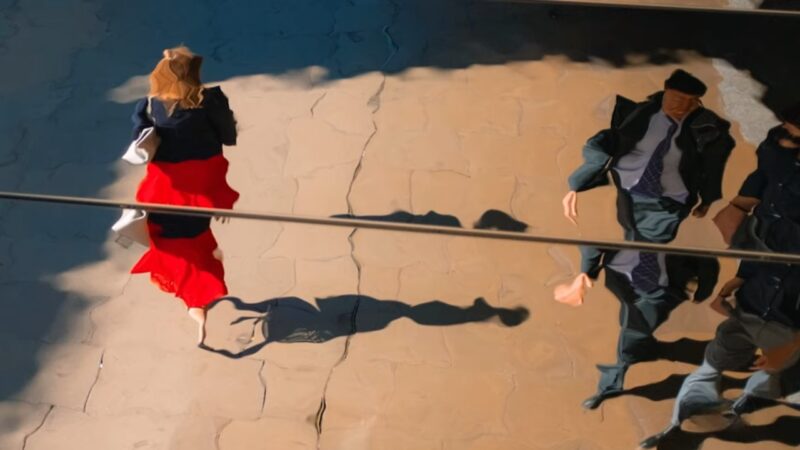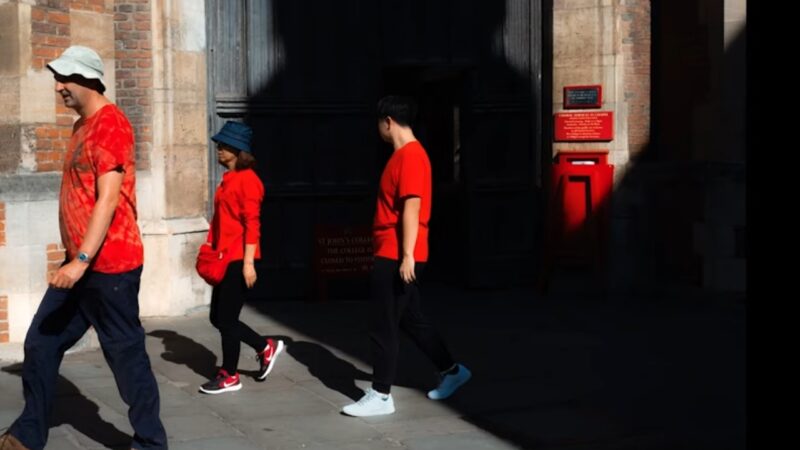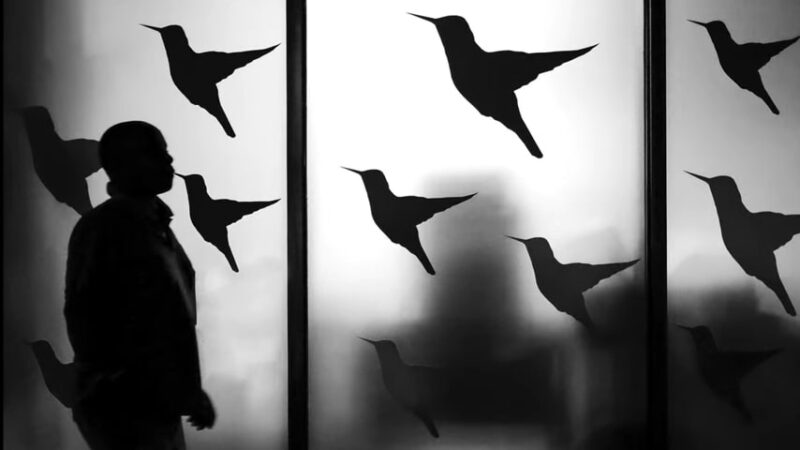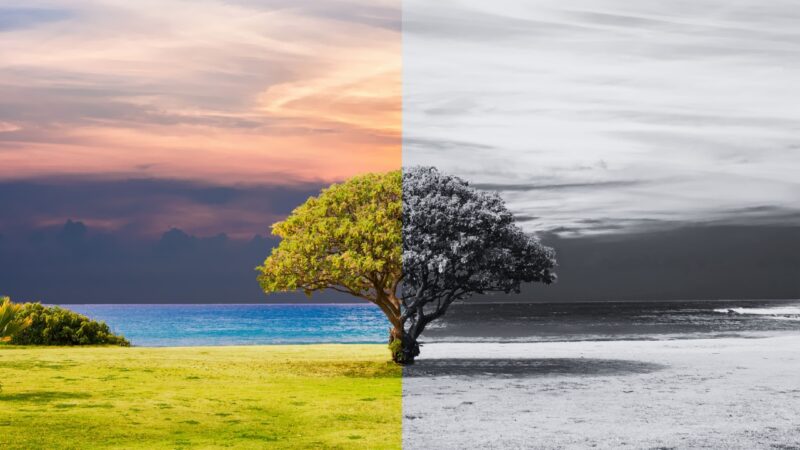Photography is a powerful medium that allows us to capture the world’s diverse beauty, emotions, and stories. One essential technique that can elevate your photography from ordinary to extraordinary is juxtaposition.
Juxtaposition involves combining contrasting elements within an image to create visual intrigue and evoke strong emotions. Much like the compelling contrasts found in black and white imagery, especially as seen in the works of renowned monochrome photographers, juxtaposition in photography can elevate the narrative and emotional depth of an image.
In this article, we will delve into ten valuable tips on how to create juxtaposition in your photography, enabling you to craft compelling and thought-provoking images that leave a lasting impression on your viewers.
1. Understand the Concept of Juxtaposition
At the core of creating compelling juxtapositions in your photography lies a thorough understanding of the concept itself. Juxtaposition involves skillfully placing contrasting elements within your frame to accentuate their differences and create a visually captivating impact.
These elements could be opposites in terms of color, texture, size, shape, or even subject matter. For instance, juxtaposing a small, delicate flower against a rugged, weathered stone wall can create a striking contrast of fragility and strength. Understanding the power of juxtaposition allows you to harness its potential and infuse your images with depth and emotional resonance.
2. Seek Inspiration and Analyze Masterful Works
To hone your skills in crafting juxtapositions, take the time to seek inspiration from the works of accomplished photographers and artists who have mastered this technique. By analyzing their creations, you can gain valuable insights into how they leverage contrasting elements to tell compelling stories or evoke powerful emotions. Visiting art galleries, exploring photography books, and immersing yourself in online platforms dedicated to photography can be rich sources of inspiration.
As you study these masterful works, pay attention to the arrangement of elements, the use of colors, and the overall visual impact of each photograph. Draw inspiration from a diverse range of styles and approaches to broaden your creative horizons.
3. Compose with a Purpose

Effective juxtapositions in photography are not accidental; they stem from deliberate and thoughtful composition. Before you press the shutter button, consider the story or message you want to convey through your image. What emotions do you wish to evoke in your viewers? What narrative do you want to unfold?
By defining a clear purpose for your photograph, you can make informed creative decisions to ensure that your juxtaposition serves its intended role within the composition. Remember, every element you include in your frame should contribute to the overall narrative, enhancing the visual impact and leaving a lasting impression on your audience.
4. Play with Scale and Proportions
An exciting aspect of juxtaposition lies in experimenting with scale and proportions to create captivating visual contrasts. By juxtaposing elements of vastly different sizes, you can generate a sense of drama and visual tension. For instance, a lone figure standing against the vast expanse of a mountain range can convey the insignificance of humanity in the face of nature’s grandeur.
Conversely, placing an oversized object amidst tiny details can evoke a whimsical or surreal feeling. Don’t be afraid to explore different focal lengths and perspectives to achieve the desired effect; these choices will play a crucial role in defining the impact of your juxtaposition.
5. Contrast Colors and Tones

Color is an immensely powerful tool in photography, and employing contrasting colors can add a new dimension to your images. Complementary colors, which sit opposite each other on the color wheel (such as red and green or blue and orange), create a visually vibrant and dynamic impact when placed together in a composition.
On the other hand, contrasting tones can heighten the mood and draw attention to specific elements in your photograph. For example, capturing a bright, colorful subject against a monochromatic background can help the subject pop and become the focal point of the image. Familiarizing yourself with color theory can greatly aid in understanding how to use colors to create compelling juxtapositions.
6. Combine Old and New
Juxtaposing elements from different eras can create a visually intriguing narrative that emphasizes the passage of time or the contrast between tradition and modernity. Incorporating modern subjects against historical backdrops can transport viewers into a world where the past and present converge.
Alternatively, merging vintage elements with contemporary settings can spark curiosity and contemplation. This combination of old and new not only adds depth to your photographs but also invites viewers to reflect on the evolution of societies and cultures over time.
7. Incorporate Unexpected Elements
As you develop your expertise in creating juxtapositions, challenge yourself to incorporate unexpected and unconventional elements into your compositions. This could involve placing seemingly unrelated objects side by side, juxtaposing people in unexpected environments, or capturing spontaneous moments that convey an unexpected twist.
The element of surprise can ignite viewers’ curiosity, prompting them to engage with your photograph more deeply and explore the intriguing subtleties you’ve woven into the image.
8. Explore Light and Shadow

Lighting plays an indispensable role in photography, and mastering its use can significantly enhance your juxtapositions. Experiment with various lighting conditions to highlight the differences between your contrasting elements effectively.
Soft, diffused light can create a gentle, harmonious juxtaposition, while dramatic, directional light can generate stark contrasts and amplify the emotional impact. Additionally, exploring the interplay of light and shadow can add depth and dimension to your compositions, elevating them from two-dimensional snapshots to multi-layered visual stories.
9. Embrace Symmetry and Asymmetry
Juxtaposition can be achieved through both symmetrical and asymmetrical compositions. Symmetry, where elements are mirrored on either side of an imaginary axis, creates a sense of balance and harmony.
In contrast, asymmetry introduces a dynamic tension that draws viewers into the frame, compelling them to explore the visual interplay between the elements. By understanding the impact of both approaches, you can strategically use symmetry or asymmetry to strengthen the narrative and visual impact of your photographs.
10. Edit with Precision
Once you have captured your juxtaposed images, the post-processing stage provides an opportunity to fine-tune and enhance your compositions further. Utilize editing software to adjust colors, contrast, sharpness, and other elements to achieve the desired visual impact.
While editing can elevate your photographs, exercise restraint and avoid over-processing, as subtlety often enhances the integrity of your composition and ensures that the juxtaposed elements remain the focal point of the image.
FAQs
What is the main purpose of using juxtaposition in photography?
Juxtaposition in photography serves to create visual intrigue and emotional impact by combining contrasting elements within an image. The purpose is to highlight the differences between these elements and evoke powerful emotions or tell compelling stories through the dynamic interplay of the subjects.
How can I find inspiration for incorporating juxtaposition in my photography?
Seek inspiration from the works of accomplished photographers and artists who excel in using juxtaposition. Visit art galleries, explore photography books, and immerse yourself in online platforms dedicated to photography. Analyze their compositions, study how they arrange elements, and observe how they use colors and lighting to create impactful images.
Is juxtaposition suitable for all types of photography, or is it more specific to certain genres?
Juxtaposition is a versatile technique that can be applied to various genres of photography. Whether you are into landscape, portrait, street, or still-life photography, the skillful use of juxtaposition can enhance your images and elevate your storytelling abilities. It all depends on your creativity and the message you wish to convey through your photographs.
Should I plan and stage my juxtaposed images, or can I capture them spontaneously?
Both approaches can yield compelling juxtaposed images. Planning and staging your shots allow you to have better control over the elements and the narrative you want to convey. On the other hand, capturing juxtapositions spontaneously can lead to unique and unexpected moments that evoke a sense of realism and authenticity in your photography.
What are some practical tips for achieving strong juxtapositions with colors and tones?
To create impactful contrasts with colors and tones, consider using complementary colors (colors opposite each other on the color wheel) in your composition. Place bright, colorful subjects against neutral or monochromatic backgrounds to make them stand out. Experiment with different lighting conditions to highlight the color contrast and evoke the desired mood in your images.
How can I avoid over-editing my juxtaposed photographs during post-processing?
Over-editing can detract from the authenticity of your juxtapositions. To avoid this, take a step back after editing and review your photograph with a fresh perspective. Aim for subtle adjustments that enhance the elements without overpowering them. Preserve the essence of your juxtapositions and ensure that the visual impact remains authentic and true to your creative vision.
Conclusion
Mastering the art of juxtaposition in photography requires practice, experimentation, and a keen eye for detail. By understanding the concept, seeking inspiration, and applying the ten tips provided in this article, you can elevate your photography skills and create captivating images that resonate with your viewers.
Remember that juxtaposition is a versatile technique, and there are endless possibilities to explore. So, go out, capture the world through your lens, and let your creativity flourish in creating thought-provoking and impactful photographs. Happy shooting!
